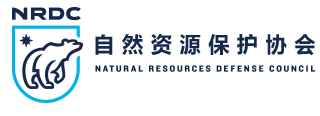
Beijing, China – On December 28, 2010, the Institute of Public & Environmental Affairs (IPE) and the Natural Resources Defense Council (NRDC) released the results of the second annual Pollution Information Transparency Index (PITI), an assessment and ranking of environmental information disclosure in 113 Chinese cities. The assessment results showed that China's pollution information disclosure has improved overall; however, progress was uneven. Some cities again received low scores, and a number of cities regressed, receiving lower scores than in 2008.
This year’s PITI assessment showed that many cities still perform poorly on the disclosure of information regarding enterprise violations and accidents in particular. It is also still generally not possible to obtain enterprise-level emissions data in China. At the same time, the PITI evaluation discovered many innovations and good practices in China's environmental information disclosure. For example, some cities have begun to have a greater degree of interaction with the public and environmental groups regarding environmental information disclosure. These good practices contribute will contribute to the advancement of environmental information disclosure in China.
On May 1, 2008, the China's Regulations on Open Government Information and Measures on Open Environmental Information went into effect. IPE and NRDC jointly developed the Pollution Information Transparency Index in 2008 to evaluate the implementation of these regulations. The first PITI evaluation showed that the "ice had been broken" on China's environmental information disclosure, but that the state of disclosure was still in its early stages. Only four cities received a PITI score above 60 points (out of 100).
The average score among all 113 cities assessed in this year's PITI evaluation was 36 points, 5 points higher than the 2008 average. Eleven cities scored over 60 points, and Ningbo, the highest scoring city, exceeded 80 points. Shenzhen, Shanghai, and Taizhou also performed well in the second PITI assessment.
Ma Jun, director of IPE, said: "This report gives us a unique opportunity to compare the performance of cities on environmental information disclosure over time. We can see which cities have improved, and identify those that have not improved or have even backtracked. At the same time, we have been able to conduct a variety of other comparisons among cities and within provinces. For example, we have highlighted the performance of provincial capitals and cities directly under central government jurisdiction because they typically receive more resources and would be expected to perform better on the PITI evaluation. This report highlights good practices and weak performers to promote the sharing of best practice models."
According to the results of this year's assessment, Jiaxing, Foshan, Zhongshan, and a number of other cities had relatively large improvements in information disclosure. Taiyuan, Hangzhou, Chifeng, and a number of other cities backtracked. Our analysis shows that Tianjin, Shijiazhuang, Hohhot, Guiyang, Zhuhai, and a number of other cities underperform compared to similarly situated cities. These cities need to carefully consider the good practices seen in other cities.
Government representatives from a number of cities participated in the release of the PITI assessment results, and shared their experience in improving environmental information disclosure. Mr. CHEN Shengliang, a director in the Chongqing Environmental Protection Bureau, stated that "the localities must implement environmental information transparency because it is national law. At the environmental protection department of Chongqing, we do our best to coordinate with other departments in promoting environmental open information."
Mr. XIE Xiaocheng, director of the Ningbo Environmental Promotion and Information Center in Zhejiang Province, said: "Through the establishment of an environmental open information mechanism, Ningbo's Environmental Protection Bureau created innovative methods for environmental information disclosure, and protected the public's environmental right to know, right to engage, and right to monitor. This is a ray of sunshine for environmental protection bureau operations."
Mr. TANG Yuanpeng, director of the Huangshi Environmental Protection Bureau Center for Open Information in Hubei Province, said that "this May we had the opportunity to participate in the [IPE- and NRDC-sponsored] Workshop on Pollution Source Monitoring Data Disclosure in Wendeng, Shandong Province. Representatives from environmental protection bureaus across the country met to discuss their experience with environmental information disclosure. I was very inspired, especially by the topic that environmental open information is a way to increase public right to know, and reconcile differences between the public, enterprises, and the government. This gave us much impetus to improve, so after we returned to Huangshi we renovated our existing environmental protection website to strengthen information disclosure and improve user friendliness. It is our deepest wish that through open information we can create a service-oriented government and improve the government's image."
Alex Wang, director of the Environmental Law Project at NRDC, had the following to say about the milestones in 2009 and 2010: "The next step is to improve enterprise-level environmental information disclosure. Current environmental regulations only require disclosure of such pollution data for a limited number of black-listed companies, and in practice it has been difficult to get even these companies to disclose the amount of pollution they release into the environment. However, the international best practice is to disclose facility-level pollution data through a Pollutant Release and Transfer Register (PRTR), which can help to reduce pollution by motivating companies, enhancing public monitoring and supervision, and strengthening the government's ability to prioritize and target enforcement efforts. Given China's recent advancements in environmental information disclosure, a PRTR for China is the obvious next step."
Experts and academics also attended the press conference and provided comments. Professor ZHU Xiao from China Renmin University Law School said: "The results from the PITI assessment, especially the sections on the 'All-Star' cities, once again give us the hope and conviction that improving environmental information disclosure of the Chinese government is possible. The key is to change the way we think about environmental open information. Also, we should be clear in the fact that environmental open information is not an isolated pursuit. It is intimately related to environmental management, environmental law, and environmental litigation. Through all these interactions it is possible to reach our ultimate goal of improving China's environment."

